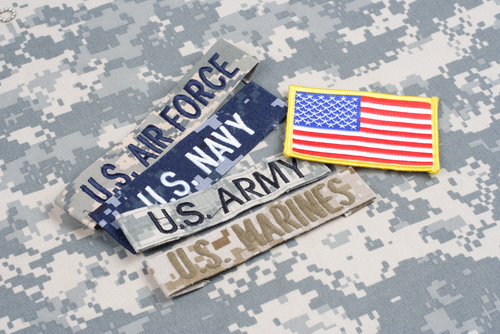
Service Differences In Military Occupational Specialties Rating
ARMY: The MOSC for Army Personnel begins with two numbers followed by a letter. For example, a soldier whose specialty is photography would have a MOSC of 25M.
MARINES: In the Marine Corps, all personnel are assigned a four-digit MOSC designating their primary occupational field and specialty. A marine whose specialty is photography would have a MOSC 4641.
AIR FORCE: The U.S. Air Forces Specialty Code (AFSC) is five-digits for enlisted airmen, and a four-digit code for officers. An airman whose specialty is photography would have an AFSC of AV0X2.
NAVY: The Navy does not use MOSC, but has a system of codes for enlisted personnel called Naval Enlistment Classification (NEC). Naval Officers use a system of codes called “Designators.” A sailor whose specialty is photography would have an NEC of PH.
Related Resource: Top ten Online Colleges for Veterans
Why Are These Codes Important?
Within the military service, a Military Occupational Specialty Rating is crucial in identifying skill needs. Military members are recruited based on job aptitude and trained in the various ratings in order to meet these service needs. Upon completion of initial training, military members receive their primary specialty ratings. Throughout a career, additional specialty codes may be assigned through a combination of training and/or experience. When planning military readiness, these specialty ratings are invaluable in determining what recruitment and training must take place.
Another important role for these ratings is in medical and risk studies. Major Gabriel Pepper, USAF has written a presentation on “Military Occupational Codes: Their Uses and Limitations in Understanding Occupational Exposure Risks And As Predictors of Deployment-Related Lung Disease.” In his presentation, Major Pepper noted that the practice of identifying specific specialty codes has been used in Post Traumatic Stress Disorder (PTSD) and traumatic brain injury (TBI) studies.
For the military member, these codes help in their professional development and career path. Within the military, service members will have numerous opportunities to grow within their specialty. Assignments and training are often dependent on specialty ratings.
For military members choosing to enter civilian life, specialty codes can be matched to civilian job openings on the basis of education, training, skills, and experience. Specialty codes can help employers search for qualified veterans to fill civilian job openings.
Conclusion
In the future, it is hoped that service differences might be resolved and a standard rating system would exist for all of the military services. The Military Occupational Specialties Rating will continue to play a crucial role in the management of the readiness of our armed forces.
Related Resources:
